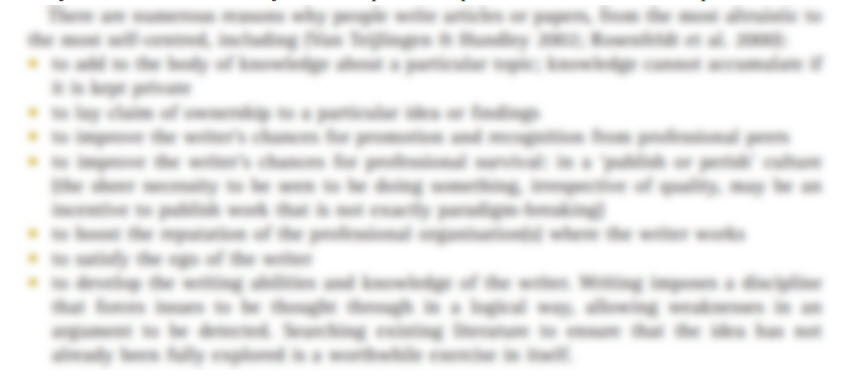Writing to-do lists on paper might seem a waste of time if you already prepare to-do lists with software. Project management software such as Asana and Trello are effective and powerful tools and I am not suggesting we stop using them and go back to paper. My concern is that relying on software might cause a lack of spontaneity when doing research and in capturing ideas when working on other tasks. Well-designed paper lists and organised note-taking can still play an important role in project management and be used in conjunction with software.
There are important benefits to hand-written note-taking that we might overlook if we decide to only write electronically:
1. It’s quick and easy to jot down short tasks and simple ideas on paper
When we are in the middle of a task and come up with a good idea or something we need to remember, it may be easier and less distracting to just jot these thoughts down on paper. Having to open up software, allocate an idea or task to a project description, describe the task, decide who is responsible for a task and when it should be completed is time-consuming.
2. Not everything we write needs to be kept
Not everything we write down will be worthy of further consideration. Occasionally, ideas or tasks will become inconsequential or lose attraction if they are left for a period of time. If paper lists are reviewed every 1-2 days, items or ideas that are no longer relevant can simply be crossed off or ignored. While improved technology may allow us to collect more information, it can contribute to information overload. Using electronic tools to capture everything we have to do or every idea we come up with might mean we end up with huge lists of items that will all need to be reviewed at some point.3. A paper list is easy to refer to and doesn’t need batteries
Using paper lists to record tasks and ideas is easy to refer to. Even with multiple computer screens it is difficult to keep more than 2 or 3 pages of anything open at the same time. You can also take a quick snap of your paper list with your smartphone if you need a quick backup or want to share it.
4. Handwriting can force you to summarise effectively
Note-taking helps to focus attention on more important items and reviewing notes is also beneficial for recall (Kiewra 1985, Kiewra et al. 1991). While note-taking by typing or vocal recording is effective and easy with software, what you record still requires effective classification for easy retrieval. If you tend to take too many notes indiscriminately, it may be difficult to later decide what is important. As the act of handwriting is usually slower than typing, we are forced to highlight what is most important. Therefore, compiling paper lists may help you to summarise important information quickly. Ideas and tasks that remain after reviewing paper lists can then be transferred to software.
What are the features of a well-designed to-do list?
Ultimately what works best for you will depend upon how you work and organise your time. I have developed the Daily Task & Ideas Workbook and offer it here free of charge (and no email signup). This workbook is designed to be printed out and used to capture ideas and tasks on paper, while simultaneously allocating the priority and stage of completion of different tasks. This workbook can also be used to help you identifying new tasks and projects. The workbook has two pages (Page 1 - Daily Task List and Page 2 - Ideas & Brain Dump) with the following sections:
Page 1 – Daily Task List.
ROCKS (Must do today); PEBBLES (Must do soon); SAND (Short, discrete tasks)
The three sections in the first column are used to record tasks of different priorities. I use the ROCKS/PEBBLES/SAND analogy where the difference in sizes between ROCKS, PEBBLES and SAND mostly relates to the priority of the task. The general idea is that you can only fit in a certain number of large ROCKS in a container but the container is not yet full as you can still fit in smaller PEBBLES. After you have placed in all the pebbles that will fit into the container, you can still pour in SAND. I have adapted this idea so that ROCKS are the tasks that must be completed today, PEBBLES are tasks that must be completed soon while SAND tasks are the short, important tasks that can be completed in between other tasks or when you lack energy or time to complete larger tasks. When your list is reviewed, invariably, PEBBLES and SAND will become ROCKS if they are left incomplete and grow increasingly important.
The three sections in the second column are used to record tasks that are COMPLETED; STARTED/ONGOING; and OVERDUE/SCRUB TICKS. Personally, I like to highlight tasks that have been COMPLETED during the day as this gives me a visual reminder of what I have achieved and helps me to feel productive.
Page 2 – Ideas & Brain Dump
This page is designed to capture brand new ideas and to identify new projects, sub-projects and tasks. It also includes a section to record topics that need research and projects that need updating.
My recommendation is to use the Daily Task & Ideas Workbook it for 1-2 days then review the content. Items that haven’t been crossed out or completed can be either moved to a fresh workbook or to project management software. The Daily Task & Ideas Workbook can be downloaded here: version 1 or version 2. You can also download an example workbook that includes hypothetical tasks and ideas.
REFERENCES
Kiewra, K. A. (1985). Investigating notetaking and review. A depth of processing alternative. Educational Psychologist, 20, 23-32
Kiewra, K., Mayer, R., Christensen, M., Kim, S., & Risch, N. (1991). Effects of repetition on recall and note-taking: Strategies for learning from lectures. Journal of Educational Psychology., 83(1), 120-123.
© Dr Marina Hurley 2021 www.writingclearscience.com.au
FURTHER READING
- How to build and maintain confidence as a writer
- How low-confidence can reduce the quality of your writing
- The essentials of science writing: identify your target audience
- The essentials of science writing: plan before you write
- The essentials of science writing: What is science writing?
- 8 steps to writing your first draft
- Two ways to be an inefficient writer
- Work-procrastination: important stuff that keeps us from writing
Any suggestions or comments please email admin@writingclearscience.com.au
Find out more about our new online course...
Now includes feedback on your writing Learn more...
SUBSCRIBE to the Writing Clear Science Newsletter
to keep informed about our latest blogs, webinars and writing courses.





